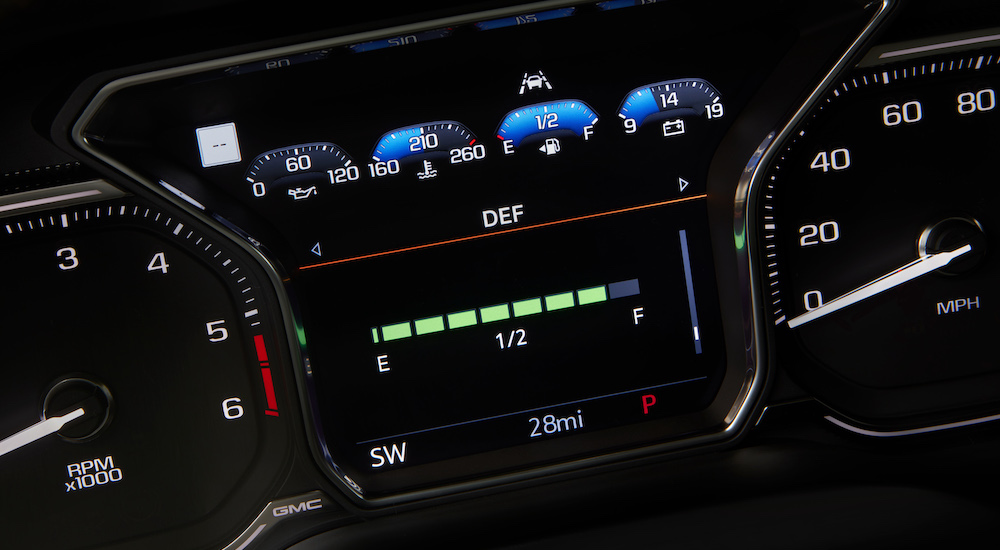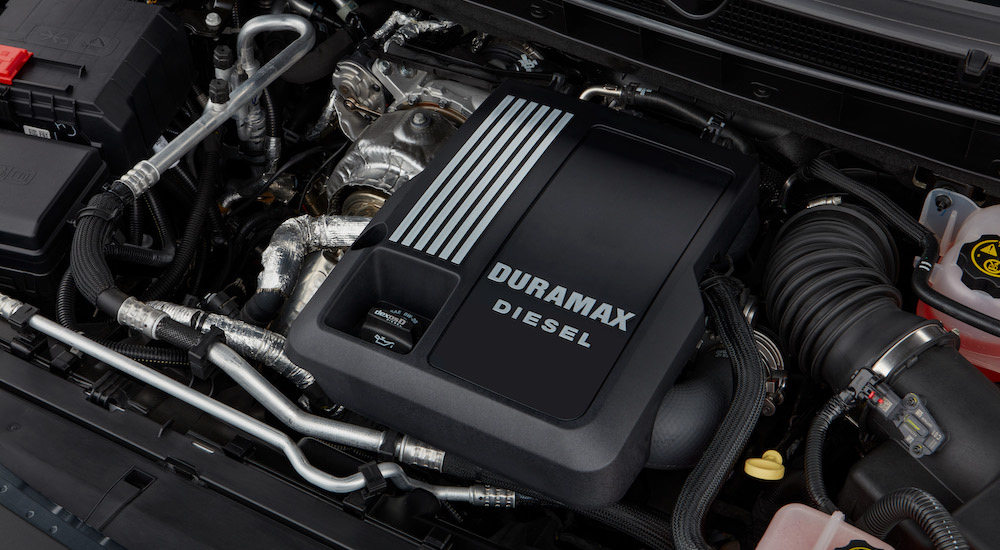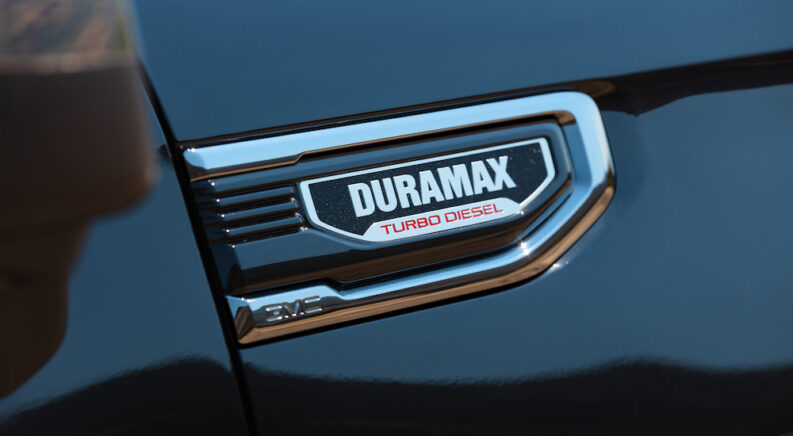So you’ve bought a GMC Sierra 1500 pickup or Yukon SUV with a Duramax 3.0L diesel engine for the first time. Congratulations—you now have the torque you need for work, hauling, and off-road exploring while getting better fuel mileage than any of the gas-powered engine options.
There’s one big question, though: what about service? Diesel and gasoline engines have significant design differences. As such, GMC service on a Duramax engine isn’t quite the same as the gas engine you’re accustomed to. If you treat the engine the same way, it could end up heading to the great junkyard in the sky sooner than you like.
In this guide, we’re going over the basics of Duramax engine service so you can keep your Sierra 1500 or Yukon on the roads and trails longer. We’ll also go over service information for components such as the transmission and transfer case, as failure to properly maintain these parts can directly or indirectly lead to engine trouble.
What’s the Difference Between Maintaining Diesel and Gasoline Engines?
At its core, servicing diesel and gas engines is similar. You still need to change the engine oil, periodically flush the cooling system, and other common tasks. That said, there are some key differences when it comes to Duramax diesel engine maintenance:
- In addition to the primary fuel filter on a gas-powered vehicle, there is a secondary fuel filter in the engine that you need to change.
- You will periodically need to add something called diesel exhaust fluid (DEF) to the vehicle.
- Since diesel engines don’t have spark plugs, you never need to worry about changing them.
- Some parts are harder to access and thus require more time and effort than on a gas engine.
With that in mind, let’s go over 3.0L Duramax diesel engine maintenance part by part. Note that when we give both a mileage and a time length—for example, every 20,000 miles or 20 months—you should perform the maintenance at whatever interval you reach first.
Engine Oil and Filter
Motor oil and filter changes are perhaps the most basic parts of engine maintenance. The recommended schedule is to change both every 7,500 miles, which is the same as the GMC gas-powered engines. Duramax engines use SAE 0W-20 viscosity oil, and it should have the dexosD logo, which means it has been approved by GMC. The manufacturer also recommends checking the oil level every 400 miles and before long trips, which will alert you to potential leaks or oil burn-off.
Engine Air Filter
Like on gas engines, the air filter is responsible for catching particulates before they get into the engine. The official GMC maintenance schedule says to replace Duramax air filters every 45,000 miles. You should also inspect the air filter at each oil change, and if it looks to be in rough shape, replace it early. The filter is in the engine bay, and you’ll need an 8mm wrench or socket to remove the lid.
Engine Fuel Filter
The secondary fuel filter is a “last line” of engine protection that traps smaller particulates than the primary filter. GMC recommends replacing it every 30,000 miles, though you may want to replace it sooner if you do a lot of off-roading or towing. The housing is on the left-side engine frame rail and can be removed using a 36mm socket wrench.

Diesel Exhaust Fluid
This additive is used in modern diesel engines to help them meet EPA emission guidelines. There is no set maintenance schedule for DEF in the Duramax engine; you simply top it off when needed. Duramax 3.0L engines have a 5.3-gallon DEF reservoir, and the fluid is usually consumed at 2-3% of the rate as fuel. Based on this, you’ll need to refill the DEF every 6-8 fuel stops, though we recommend every 3-4 stops to be safe. If you forget, a dash warning light will go off when the level drops too low, letting you know it’s time to refill. Use fluid that has the API certification mark or meets ISO 22241 standards.
Engine Coolant
You will need to flush the cooling system and refill it at 150,000 miles. This is because the coolant gets more acidic with time, eventually causing corrosion and scale. The best way to flush it is with a special tool that vacuums out the system, including the hard-to-reach areas. Duramax engines require Dex-Cool coolant blended in a 50/50 ratio with clean water. You’ll need to add the new coolant, let the engine run for several minutes, allow it to cool off, and then add more coolant so it can properly spread throughout the system.
Oil Pump Belt
The pump belt is a wet design, operating the mechanical oil pump while submerged in the engine oil. If you get to the point of needing to change a Duramax oil pump belt, your truck has already enjoyed a long and fruitful run. For GMC 3.0L Duramax trucks made from 2020 to 2022, the manufacturer recommends changing the pump belt at 150,000 miles. Trucks released from 2023 onward have an even longer interval of 200,000 miles. The downside is that you need to remove the transmission to access the belt. As such, it can be an all-day job, even at a service shop.
Transmission Fluid and Filter
For normal use, GMC does not have an official recommendation on how often to change the transmission fluid and filter. However, for “severe” use—frequent towing, off-roading, stop-and-go city traffic, etc—it recommends changing them every 45,000 miles. The job can be tricky as the pan does not have a drain plug. Therefore, you need to remove the pan, empty it, and then refill it with Dexron ULV automatic transmission fluid.
Transfer Case Fluid
For four-wheel drive models, the transfer case fluid has a recommended service interval of 97,500 miles for normal driving and 45,000 miles for severe driving. Fortunately, the transfer case has a drain plug, so all you need is a 3/8” ratchet wrench and the same fluid as the transmission. You should also replace the transfer case fluid as soon as possible if the gearbox is ever submerged in water due to the possibility of ingress.

Serpentine Belt
There is no official service schedule on the serpentine drive belt. That said, you should inspect it every time you change the oil. If there are signs of wear such as cracks, splits, frays, and excess smoothness—or you hear squeaking from the engine—replace the belt immediately.
The Duramax Life System
What if you don’t want to keep track of various service schedules, or you’re prone to forgetting? GMC can help. Certain Sierra 1500 and Yukon Duramax models are equipped with optional Life Systems for the engine oil, air filter, and fuel filter. These monitor the condition of each component while accounting for your driving habits and environmental factors. You’ll receive a message in the Driver Information Center when it’s almost time to replace the oil and filter. Once you’ve changed them, reset each Life System for the next cycle.
Caring for Your Duramax Engine
One principle between diesel and gas engines remains the same: by spending a little time and money on proper maintenance when you’re supposed to, you’ll save yourself from much more expensive and time-consuming repairs later. Whether you’re doing the work yourself or bringing your vehicle to a GMC service center, follow your Duramax engine service schedule diligently, especially if you’re one of those “severe” users. It will mean thousands more miles spent working hard and enjoying life in your GMC Sierra 1500 or Yukon.

